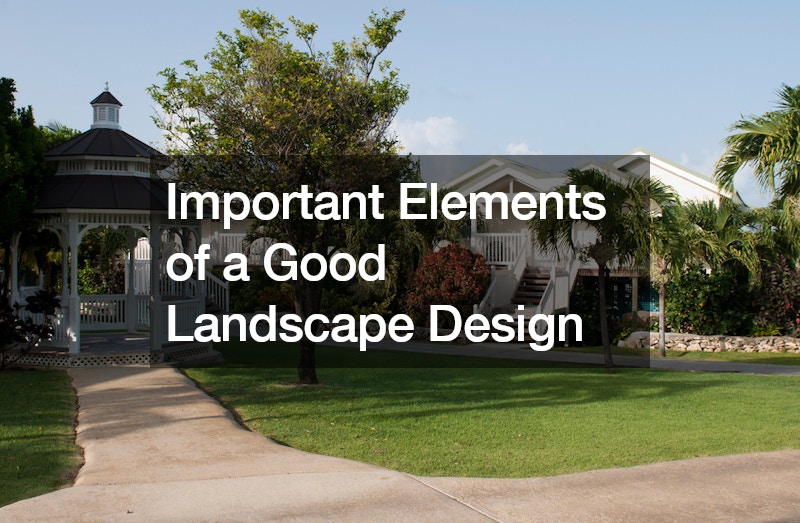A well-designed landscape can significantly enhance the beauty, functionality, and value of a property. Effective landscape design requires a thoughtful blend of aesthetics, practicality, and sustainability. Landscape designers employ various elements to create outdoor spaces that are not only visually appealing but also harmonious and functional. Here are the important elements of a good landscape design that ensure a successful and enduring outdoor environment.
1. Unity and Harmony
Unity and harmony are foundational principles in landscape design. Unity refers to the cohesive connection between different elements within the landscape. This can be achieved through the consistent use of materials, colors, textures, and plant varieties. Harmony ensures that all components of the landscape complement each other, creating a balanced and aesthetically pleasing environment. When unity and harmony are achieved, the landscape feels cohesive and inviting, guiding the viewer’s eye naturally through the space.
2. Proportion and Scale
Proportion and scale are crucial for maintaining balance within the landscape. Proportion refers to the size relationship between elements within the design, while scale ensures that these elements fit well within the overall space. For instance, a large tree should be balanced by similarly substantial shrubs or garden beds, and small plants should not be overshadowed by overly large structures. Proper proportion and scale help create a sense of order and prevent any one element from dominating the landscape.
3. Focal Points
Focal points are specific elements that draw the viewer’s attention and create interest within the landscape. These can be natural features like a stately tree, a colorful flower bed, or man-made elements such as a sculpture, water feature, or an intricately designed pathway. Focal points serve as visual anchors, providing a sense of direction and encouraging viewers to explore different areas of the landscape. Effective use of focal points can make a landscape more dynamic and engaging.
4. Rhythm and Movement
Rhythm and movement are essential for guiding the viewer’s eye through the landscape and creating a sense of flow. Rhythm can be established through the repetition of plants, colors, shapes, or textures. This repetition creates a predictable pattern that is pleasing to the eye. Movement, on the other hand, is achieved by varying these elements in a way that leads the viewer’s gaze throughout the space. By combining rhythm and movement, landscape designers create a dynamic environment that encourages exploration and enjoyment.
5. Sustainability
Sustainability is a key consideration in modern landscape design. Landscape designers incorporate sustainable practices to ensure that the landscape is environmentally friendly and resource-efficient. Choose native plants that are adapted to the local climate. Invest ineco-friendly materials and install efficient irrigation systems. This not only reduces environmental impact but also ensures the long-term health and viability of the outdoor space.
6. Functionality
A good landscape design must also be functional, meeting the needs and preferences of the property owner. This involves careful planning to ensure that the space can be used for various activities, such as gardening, entertaining, relaxing, and recreation. Functional design also considers practical aspects like accessibility, privacy, and maintenance. By balancing aesthetics with functionality, landscape designers create outdoor spaces that are both beautiful and practical.
Conclusion
Creating a successful landscape design involves a careful blend of unity, proportion, focal points, rhythm, sustainability, and functionality. These elements work together to form a cohesive and visually pleasing environment that enhances the property’s appeal and usability. Landscape designers use their expertise to integrate these principles, ensuring that the final design is not only stunning but also sustainable and practical. By focusing on these important elements, homeowners can achieve a landscape that adds value and enjoyment to their property for years to come.
.

